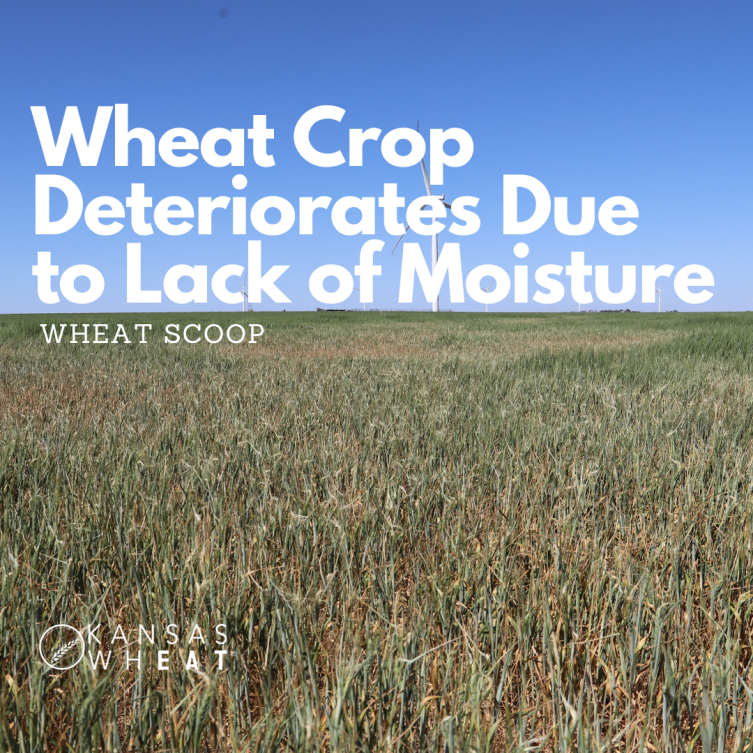Breadcrumb
- Home
- Wheat Scoop: Wheat Crop Deteriorates Due to Lack of Moisture
According to Ross Janssen, Chief Meteorologist for Storm Team 12 in Wichita, the precipitation in Dodge City last month was 0.02 inches, tying the 1909 record for the driest April on record.
What’s even worse than a continuing multiyear drought is the loss of hope being felt throughout central and southern Kansas for a crop that, in January and February, was one of the better-looking wheat crops they’d seen in the past ten years.
The condition of the crop has been deteriorating rapidly, especially over the past few weeks, going from 57 percent good to excellent on February 25 to only 31 percent good to excellent by April 28, according to USDA’s National Agricultural Statistics Service.
It has suffered from lack of moisture for much of the growing season, especially during the spring green-up. The Kansas wheat crop is also ahead of schedule, with one-third already headed, well ahead of 9 percent last year and 6 percent average. A March 26-27 freeze event took a toll on it, as there was not enough snow cover, and the plants were more advanced than they typically are at the end of March.
Mike Hubbell, a farmer from the Spearville area in Ford County, said his wheat came up good last fall, received a decent snow in February, was pretty wet in late January and February, and was looking pretty good. However, the last decent moisture it received was on February 5. Since then drought has killed off some tillers and it’s going downhill pretty rapidly.
A field of T158, planted on September 28, 2023, showed drought stress and freeze damage. Hubbell said most of the fields in the area were the same, with brown parts across the fields, mostly due to the drought. He reports that wheat in the area still has some potential — if the weather starts to cooperate from here on out and provides decent grainfill conditions.
In Rice County, Brian Sieker, who farms near Chase, said, “Wheat is just such a good thing in our rotation.” His early planted fields suffered the most from the freeze but are still his best fields despite that fact. Some of the late planted wheat didn’t come up until January. His best-looking field was planted to KS Providence on September 18, 2023, but even it was only knee-high because of the drought. Sieker credited improved genetics for giving it the ability to weather the drought as well as it has.
“In February, we had some of the best wheat we’d seen in years,” Sieker said. "Hope’s not a good thing.” This year will be his third year in a row with an insurance claim on wheat, making him seriously question whether he can justify the cost of applying a fungicide.
In McPherson County, Derek Sawyer says his wheat had a lot more hope in February than it does now.
“It needs a rain,” he said. His area received 0.5 inch of moisture in April, but that’s 2.5 inches less than normal.
He said he wasn’t overly excited about planting last fall, but with fall rains in October and some moisture through the winter, it looked like his wheat showed promise. After freeze damage and drought, that promise is withering away, much like his wheat.
“There was not enough snow when the cold snap hit,” said Sawyer. “There’s always a storm that wipes out our hopes. It’s all too common lately.”
He reports that his wheat is going downhill very rapidly, and some is even having trouble shooting a head.
The loss of potential for the 2024 Kansas wheat crop has been a disappointment to all who saw promise this winter. There’s still time for Mother Nature to salvage what’s left with some optimal grain fill conditions. Participants in the Wheat Quality Council’s annual hard winter wheat tour will have a chance to take a closer look at this year’s crop during the week of May 13.
###
Written by Marsha Boswell for Kansas Wheat

